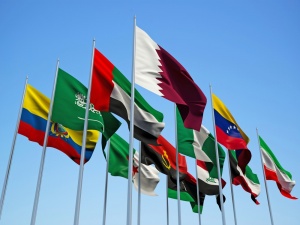Tag Archive for: #PETROLEUMEXPORTING
No Decision Yet on OPEC, Non-OPEC Meeting, Some in OPEC Skeptical: Delegates
/NewsOPEC has not yet scheduled any talks with Russia and other non-OPEC countries aimed at supporting oil prices, two OPEC delegates said on Tuesday after Russian officials talked up potential cooperation with the exporter group.
Russian Foreign Minister Sergei Lavrov said Moscow was open to further cooperation in the oil market with OPEC and non-OPEC countries.
The prospect of supply restraint by the Organization of the Petroleum Exporting Countries and rivals has helped oil prices rise above $32 a barrel from a 12-year low close to $27 last month, despite widespread scepticism that a deal will happen.
OPEC delegates have previously suggested OPEC and non-OPEC could hold talks in February or March. But no date has been scheduled, and one delegate said OPEC did not have a common view on the aim of such a meeting.
“There is nothing from OPEC yet. It is not fixed,” an OPEC delegate said, who added that expert-level OPEC meetings with non-members held in 2015 did not result in supply cuts.
“We had two meetings before. The two sides discussed the market, but there were no concrete steps.”
A second OPEC delegate said there was little point in OPEC holding a meeting with non-OPEC until OPEC itself had agreed a common position. For example, Iran, after the lifting of Western sanctions, wants to recover market share, a source familiar with the matter said last week, not cut output.
“Some of them, OPEC member-countries, are not sure what we are going to do in this meeting with non-OPEC,” the delegate said. “If the meeting takes place without results, we’ll have a big problem with the market, the price will go down.”
Venezuela has called for a standalone meeting of OPEC to discuss steps to prop up prices. But a number of OPEC members have reacted coolly to the idea, suggesting no meeting will take place.
Copyright: New York Times

Latest News
 Breaking Barriers and Building the Future18 March, 2025
Breaking Barriers and Building the Future18 March, 2025 Fundamental factors to strengthen Pemex12 August, 2019
Fundamental factors to strengthen Pemex12 August, 2019 Offshore Project Development: The Road to First Oil26 July, 2019
Offshore Project Development: The Road to First Oil26 July, 2019

